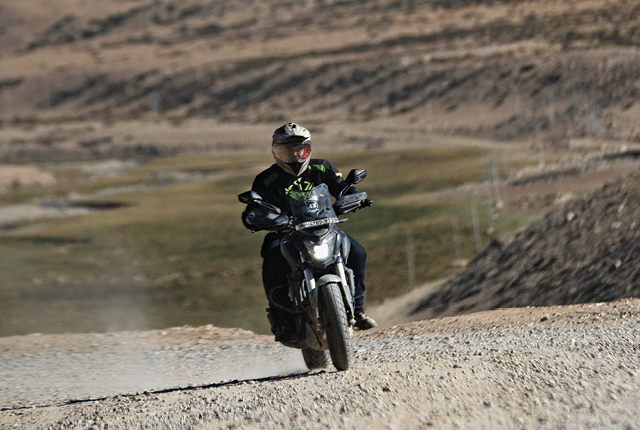
Riding through the mountains of Ladakh has long been an item on the bucket list for many a motorcyclist in India. Having ridden there with the Bajaj Dominar Ladakh Tour, I now understand why and how Ladakh became an annual pilgrimage from just a bucket list item for many
Story: Sayantan De
Photography: Bajaj Auto
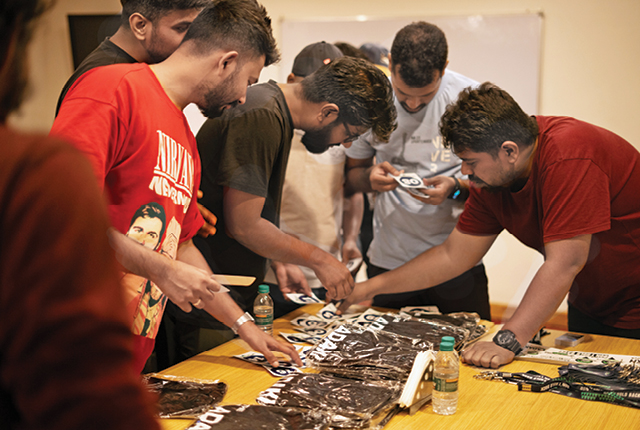
I have been riding motorcycles for a very long time, but despite having been to some of the most far-flung places in our country astride one, the ultimate bucket list-worthy destination, Ladakh, had always been elusive to me. I have tried multiple times to reach the desolate plains and some of these attempts have been solo while some with other riders, but one thing or another has always made sure the plan got cancelled and, on one occasion, that reason was a natural disaster of scary proportions. It seemed like my luck in Ladakh was not going to change. So, when the boss informed me that I would be joining the Bajaj Dominar Ladakh Tour 2024, I was happy, but cautious, as I had been burned before.
As it turned out, I had reason to be cautious. The plane I was on to reach Chandigarh, the starting point of the journey, was called back into the terminal after reaching the runway due to technical difficulties. I felt for sure my luck had not changed and I wouldn’t even be able to reach Chandigarh, let alone Ladakh. However, the airline was able to find me a different option that would take me to my destination, albeit a little late.
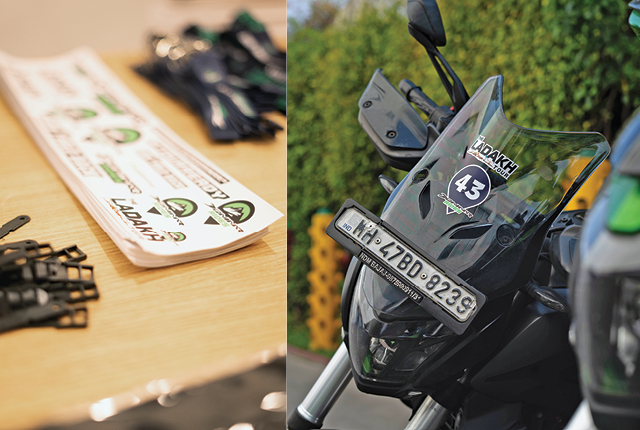
But as every motorcyclist knows in their bones, once you get on the bike, all your troubles seem to get blown away in the slipstream and the next morning, once I was on the Bajaj Dominar, I began to relax. The temperature was in the 40° Celsius range around the plains by midday and the highway was covered in a shimmering heat haze in the distance. Our destination for the day was Gemur, a village 360 kilometres away from Chandigarh.
The weather started to improve as we left the plains behind and the Himalayan foothills began and the falling temperature meant rising spirits. By the time we reached Gemur, the ambient temperature had dropped to 8° Celsius and we were shivering (it fell throughout the night to reach 4 degrees C in the early morning). The folk at the camp where we spent the night kindly lit a very welcome campfire for us. This was the first time I experienced soaking my head to cool down and sitting next to a campfire to warm up on a single day.
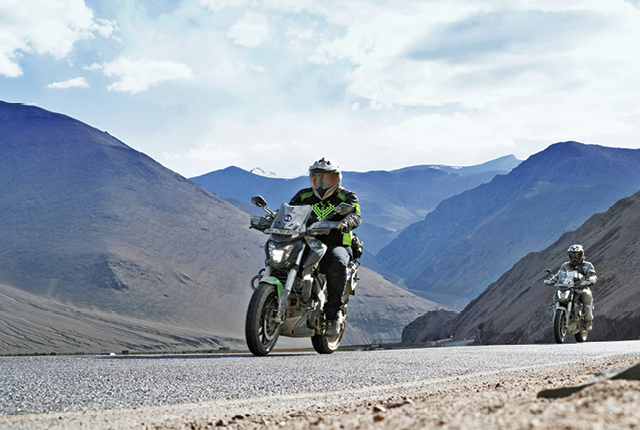
The next day’s ride took us to Tso Kar, a place with so few inhabitants that it reminded me of frontier towns in the Old West. But before we reached Tso Kar, we had to ride through Baralacha La, where I felt like the cold air was rolling down the snow-capped peaks and freezing me from within. I also stopped there to make a snowball using the snow by the roadside.
Soon we were on to the infamous Gata Loops and once we crossed it, the road surface disappeared completely. It was the dust kicked up by passing trucks that was the bigger issue than riding on gravel, but compensation came in the form of a sighting of the elusive Himalayan Marmot, which gave me an accusing stare (probably for riding next to his home) before disappearing over the dunes. The day’s route also took us through the More Plains, where the arrow-straight road cuts right through the valley and, despite warnings from our ride co-ordinator, I couldn’t help but open the throttle wide and, after a few seconds, the Dominar was sitting at a comfortable triple-digit cruise despite the altitude.
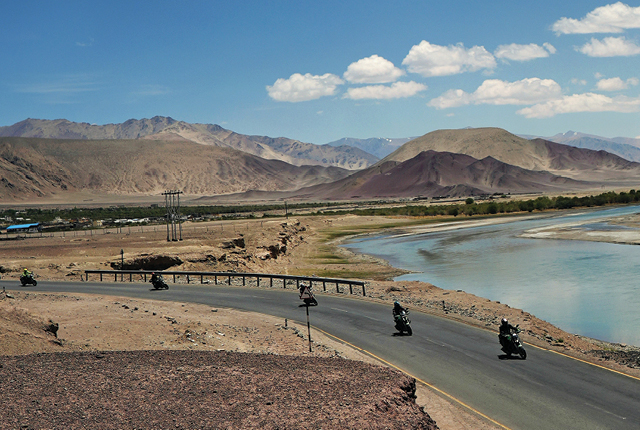
After taking a U-turn at Debring, we reached Tso Kar by nightfall. The tiny settlement is bordered by vast plains on three sides and howling winds led to a fretful sleep. I woke up much earlier than my companions and went outside to catch the first rays of the rising sun glistening on the mountaintops. I felt a sense of great contentment, almost akin to the Inner Peace they harp on about in the Kung Fu Panda movies. The same could not be said of my riding contingent, though, as almost half of them showed signs of acute mountain sickness (AMS). Two of them actually had to leave their bikes at Tso Kar as the rest of us made our way to Nyoma on a road that felt as if it was lifted straight out of The Elder Scrolls V: Skyrim. There were more off-road sections there, but after riding the Dominar for more than 600 km, I had become attuned to the bike and it was no more difficult than traversing Pune roads.
The next day was the highlight of the trip for me. We rode up to Umling La, but, unlike most people who make a beeline for the world’s highest motorable road, we didn’t turn back at the top; instead, we kept going forward to Demchok village, where we washed the road grime off in a hot spring, about 30 metres away from the Chinese border.
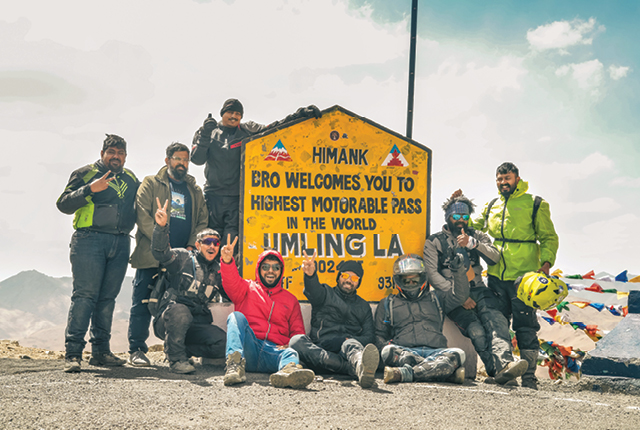
On the way back, we decided to take the road less travelled and ventured on to the Indus River valley, where any pretensions to a road disappeared. Barrelling through the empty landscape, with the river flowing on our right, and into the sunset, is hands down my life’s best riding experience. We were truly in the middle of nowhere and the feeling hit me like a wave, overwhelming me for a few minutes. It was well after nightfall that we reached Nyoma and the sense of accomplishment was palpable among the team, despite one member having to fly out of Leh that morning on account of AMS.
Charged up with this incredible escapade, we got up fresh and early the next day and headed for Karzok, a minuscule hamlet located on the shores of the Tso Moriri, a body of water whose beauty rivals that of any lake your imagination can conjure. Karzok is also home to a 17th-century Buddhist monastery and, unsurprisingly, I had one of the best thenthuk (Tibetan flat noodle soup) I have ever had here. That night, the mood was jubilant at Camp Dominar, though tinged with a bit of sadness as from the next day onwards we would only be going downhill.
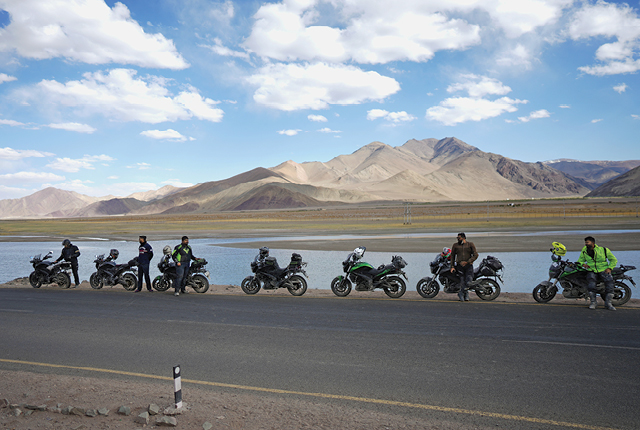
The next day of riding was an eventful one for me, as it took us from Nyoma to Gemur, nearly 300 km of riding. It was on this day, at the Baralacha La top, that I experienced my first snowfall. The powdery flakes drifting down from a grey sky, slowly piling up on the side of the road… well, it must have been the first snowfall for many other travellers as well, for people stopped everywhere to get off their bikes or out of their cars, much to the chagrin of the truck drivers.
The next day we reached Manali by afternoon, riding leisurely through the lush green hill, as the rain had reached the mountains. The contrast from the earthy browns and greys that dominate Ladakh was spectacular, to say the least. But the sky was not that periwinkle blue any more, replaced with grey clouds.
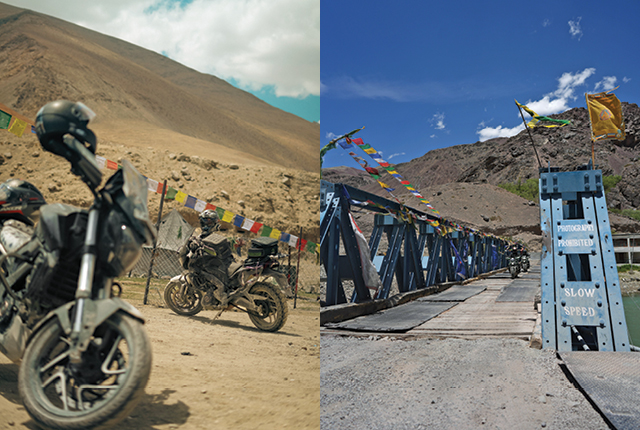
Thanks to the rain, the next day’s ride to Chandigarh was much more bearable than the first day’s, because the temperature had come down to tolerable levels. Even after coming back to Pune, the spell cast by the mountain lasted for quite some time, as I realised I was in less of a hurry, instead dealing with my morning commute with a much more forgiving attitude.
Throughout the ride, the Bajaj Dominar stood out to me as a trusty steed. Back in mediaeval times, there were horses that were fast and horses that were sturdy and it was the latter type that were in higher demand. I felt the Dominar was a steed of this persuasion: it took a tremendous amount of abuse in its stride and handled everything I threw at it with aplomb. From sustained high revs on the More Plains to the twists and turns of the endless switchbacks at Photi La(on the way to Umling La), over smooth asphalt, broken tarmac, gravel, and completely off road, the bike dealt with everything. Bajaj definitely over-engineered this bike, as it reminded me of my Pulsar 180 classic from 15 years ago.
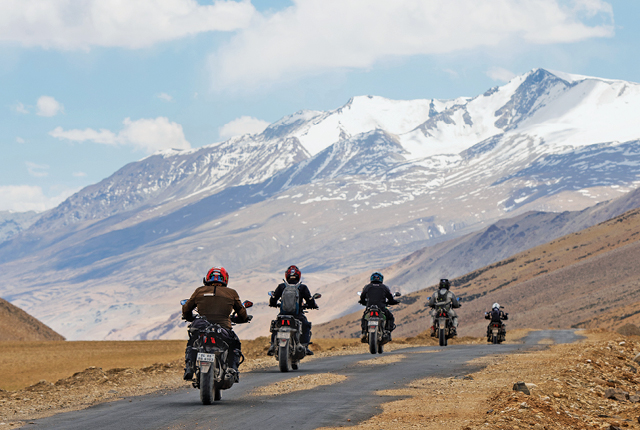
In the end, I will borrow a sliver of wisdom from a mountain man, our ride co-ordinator, to sum up my experience of the Bajaj Dominar on this Ladakh tour: ‘Wish not for the motorcycle you feel you should have brought on a journey, be thankful to the one that brought you here.’


Leave a Reply